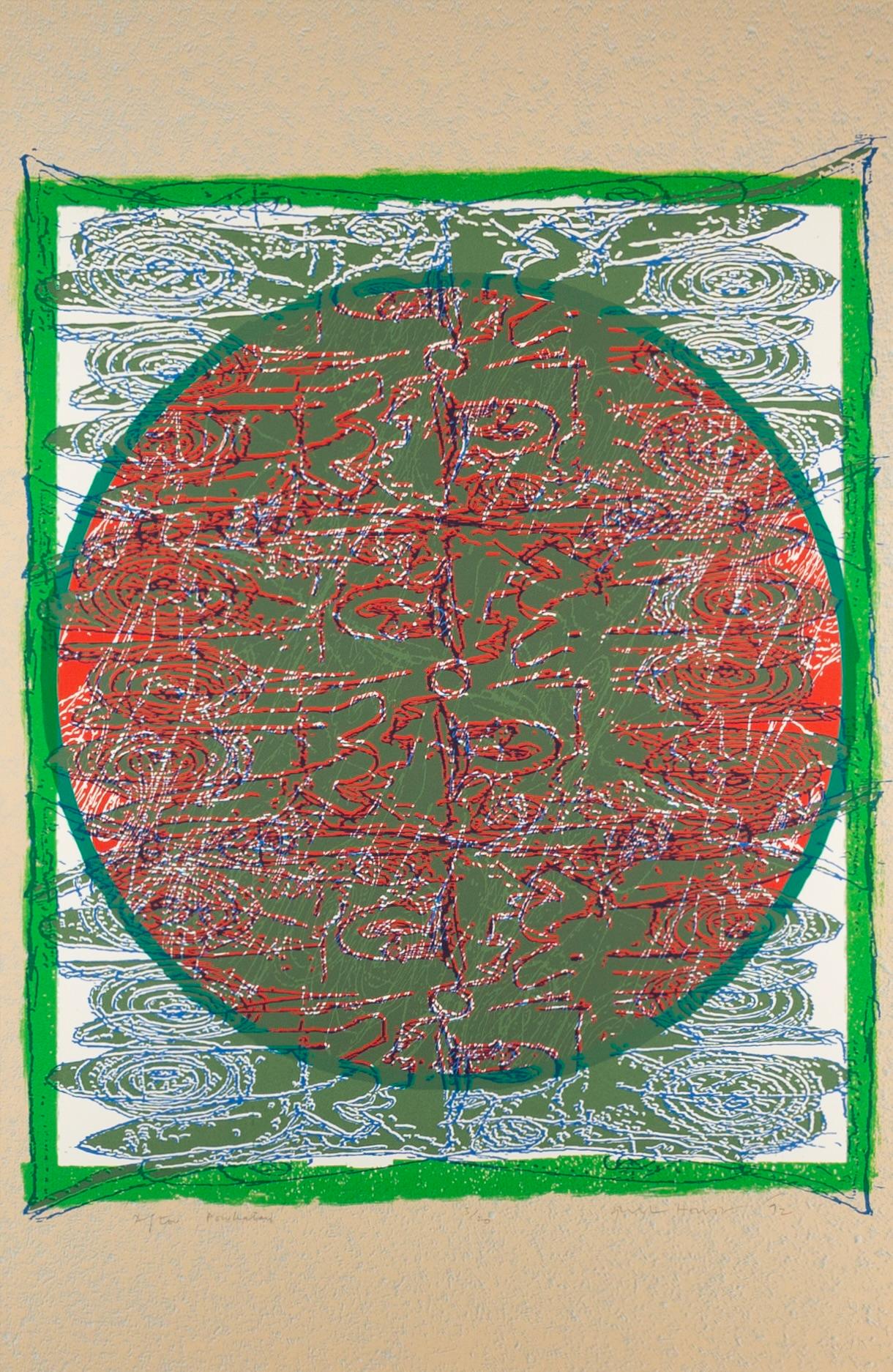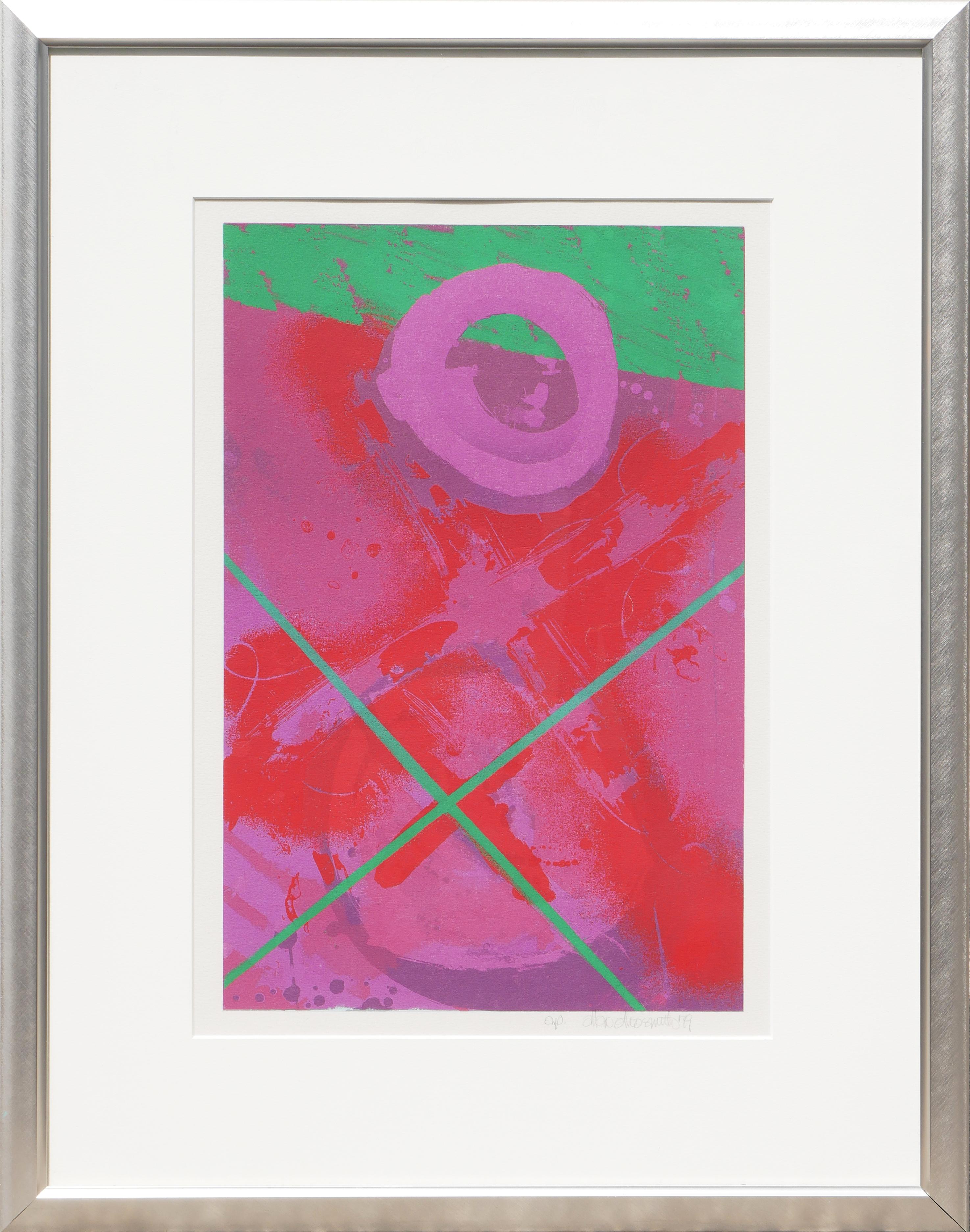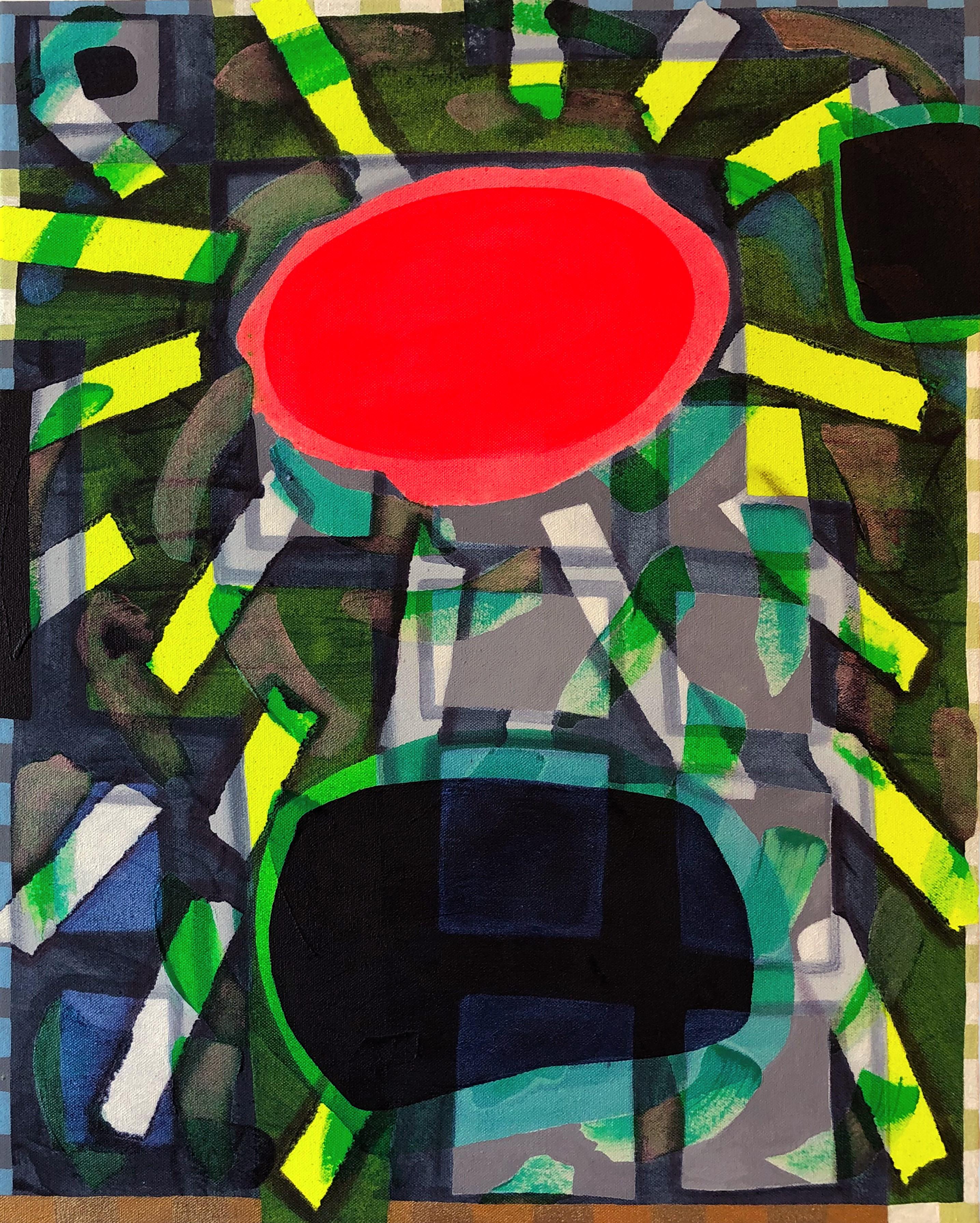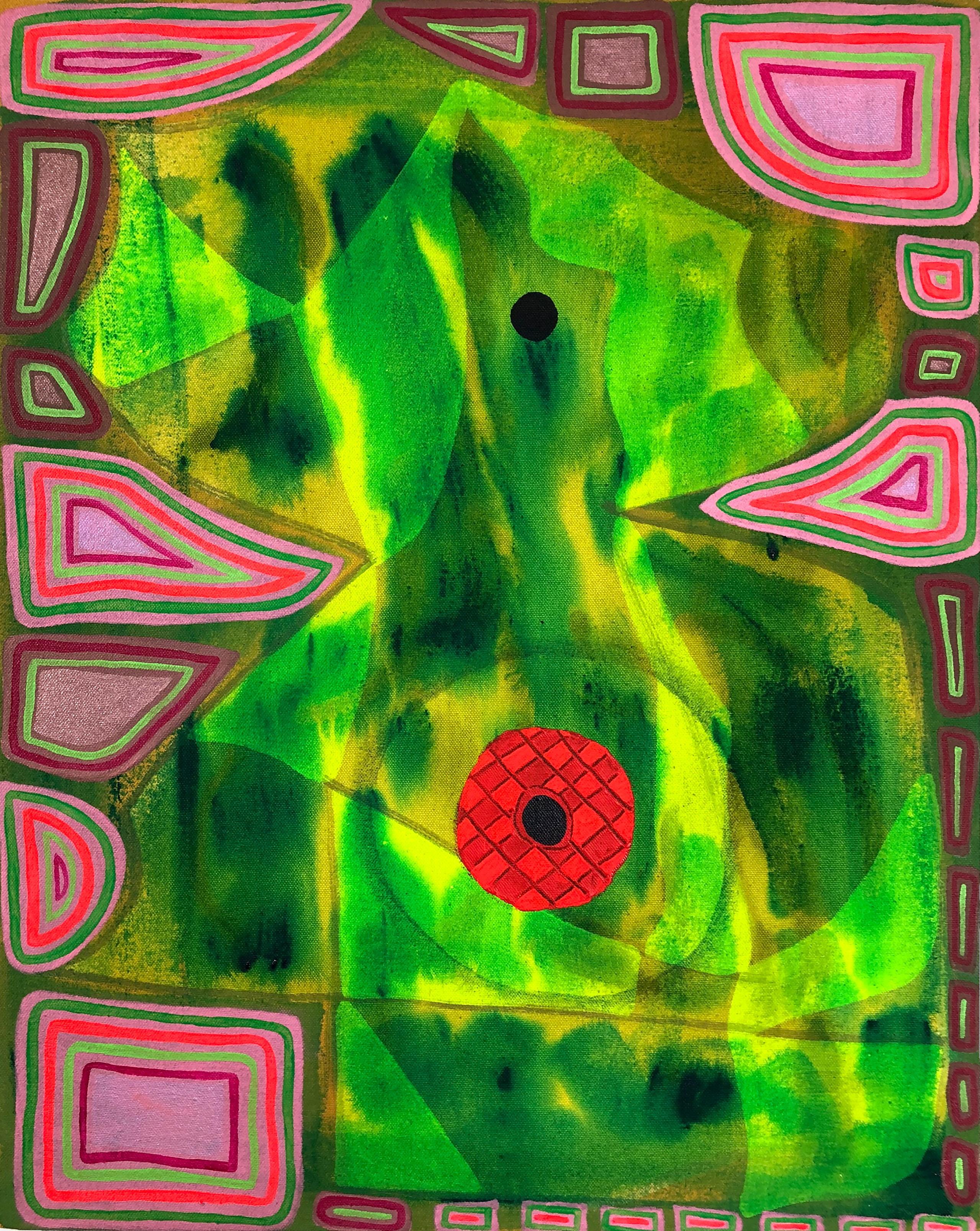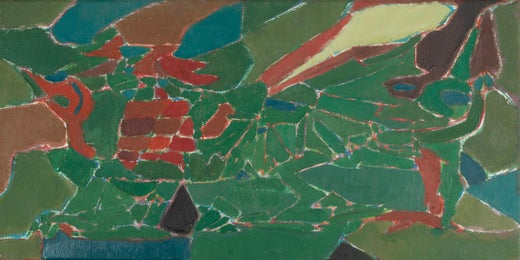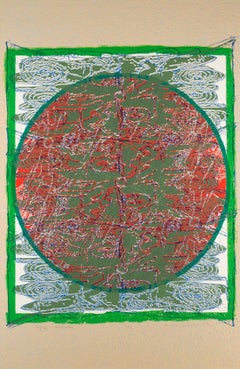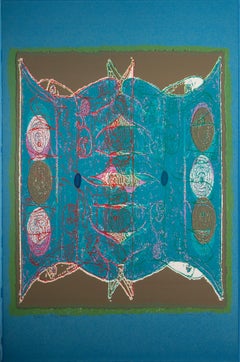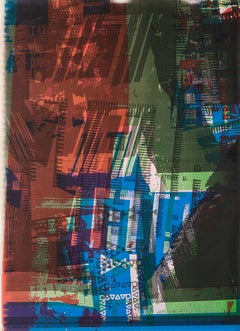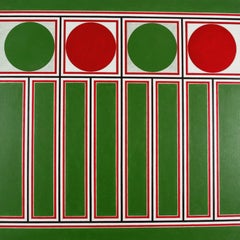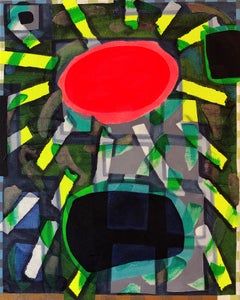Items Similar to Red Tracery, from the After Powhatan Suite - Large Pink + Green Abstract Print
Want more images or videos?
Request additional images or videos from the seller
1 of 9
Gordon HouseRed Tracery, from the After Powhatan Suite - Large Pink + Green Abstract Print1992
1992
$5,295.91
£3,950
€4,549.01
CA$7,429.37
A$8,106.79
CHF 4,194.20
MX$96,981.59
NOK 52,982.73
SEK 49,749.95
DKK 33,972.98
About the Item
Gordon House 1932-2004
Red Tracery, from the After Powhatan Suite, 1992
unframed, screenprint
101.6 x 71.1 cm
40 x 28 in
signed, titled, dated and numbered 4/20 in pencil
Gordon House was born in 1932 in Pontardawe, South Wales. Early exposure to art on trips to the Glynn Vivian Art Gallery as a young boy inspired House towards creative endeavors and at the age of fourteen he was awarded a grant to enter art school which he accepted. From 1947 to 1950 he studied at Luton School of Art, Bedfordshire, and St. Albans School of Art, Hertfordshire. House's contemporaries included Richard Smith and John Plumb with whom he remained close. During the early fifties, after finishing art school, House began work as assistant to the ecclesiastical sculptor Theodore Kern. He also spent time at an advertising studio where he honed his burgeoning skills in typography and graphic design. In 1952 House was offered the position of designer for Imperial Chemical Industries Plastics Division where he stayed until 1959. This was followed by two years spent as graphic designer for the Kynoch Press in London. In 1961 House set out on his own as a self-employed designer and typographer. Initially this was supplemented by part-time teaching at art schools in and around London but by 1964 House was able to devote himself entirely to his design work which freed up valuable time to concentrate on his own artistic output in the studio.
In the late fifties, informed by the new art emerging from America and that of his contemporaries in England, House began to create large-scale abstract works which he was invited to show in 1959 at Dennis Bowen's legendary New Vision Centre in Marble Arch.
House was an active participant in the vibrant London art scene of the sixties, regularly attending lectures, exhibitions and discussions. In 1960 he exhibited in 'Situation' the key abstract exhibition of the decade held at the RBA Galleries. Other participating artists included Robyn Denny, Bernard and Harold Cohen, Gillian Ayres, John Hoyland, Richard Smith and William Turnbull among others. These artists, united by a common admiration for American Abstract Expressionism, were frustrated by the lack of exposure given to large-scale abstract works in commercial galleries so they organised their own exhibition. The name was derived from the participants' idea that an abstract painting that occupied the whole field of vision would involve the spectator in an 'event' or 'situation'. This exhibition was followed by 'New London Situation' in 1961 and a nationwide touring Arts Council presentation in recognition of the significance of the two earlier shows.
In 1961 House began producing his first prints at the Kelpra Studio, run by Chris and Rose Prater, where he made the earliest fine art screenprint ever to be produced in Britain. Artists such as Paolozzi and Hamilton followed in his footsteps and together they started a printmaking revolution in Britain. They cemented the medium of the screenprint in the world of fine art as opposed to the commercial sphere and secured the reputation of Kelpra in the process. Later, together with Cliff White, House set up the White Ink (Ltd.) print studio in London, where he produced etchings and wood engravings on a series of magnificent antique printing presses he had collected. White Ink soon gained a reputation for innovative and high quality printmaking, attracting artists such as R. B. Kitaj, Richard Smith, Joe Tilson, Sidney Nolan, Victor Pasmore, Eduardo Paolozzi, Bernard Cohen and Elisabeth Frink.
Printmaking was to remain a key part of House's oeuvre throughout the rest of his career, whether in the medium of screenprint, etching, woodcut, linocut or lithograph. In 1981 a retrospective exhibition of his graphic works opened at the Carnegie Institute, Pittsburgh, and in 1982 this travelled to the Brooklyn Museum, New York. These shows were instrumental in bringing House's prints to the attention of a wider American audience.
- Creator:Gordon House (1932, British)
- Creation Year:1992
- Dimensions:Height: 101.6 in (258.07 cm)Width: 71.1 in (180.6 cm)
- Medium:
- Movement & Style:
- Period:
- Condition:
- Gallery Location:Kingsclere, GB
- Reference Number:1stDibs: LU2718217117452
Gordon House
The Guardian wrote of Gordon House, upon his death in 2004: Many of the works made during his last years by the painter and graphic designer Gordon House, who has died aged 71, referred back to his birthplace in the Swansea valley. He spent his earliest years in the steel town of Pontardawe. In Tin-pan Valley, the memoir he published earlier this year, he recalled "the clamour of steel mills ... the tinplate works and pithead gear" and "dynamite blasting as coal seams were struck higher up the valley". Unemployment and the depression of the 1930s led Gordon's parents to take him from the valleys of south Wales to the order and designed coherence of Letchworth, "Hertfordshire's first garden city". After leaving school at 14, he went to study, first, at Luton School of Art. For a while after that, he worked in a hospital, before, with the aid of a scholarship, moving on to St Albans School of Art. By 1961, Gordon had become established among a new generation of artists as an independently minded and adventurous painter and designer. The previous year, he had shown his large, bold, hard-edged canvasses at the important London "Situation" exhibition of large-scale abstract painting, and had designed the catalogue for that exhibition. As the 1960s moved on, Gordon designed for the pop world. He worked for the Beatles, designing their White album and the back of the Sergeant Pepper album, for which his longtime friend Peter Blake designed the front. Later, he designed Wings' first album. He delighted in the creative energy of others, and so could respond to the talents of musicians and artists alike. Gordon made paintings throughout his life as a designer. During the 1960s and 70s, his canvasses and prints reflected the dramatic tensions of his graphic design; by the 1980s, Wales had become his constant subject matter. The surface, texture and colour of his paintings softened. No doubt, he needed to pay homage to the places and the people who had shaped him, just as he always paid homage to the artists for whom he designed. His canvasses reduced in size, becoming palm-of-the-hand landscapes. He spent much time in Wales and, in his final years, he used his brush to walk a path through memories of collieries, valleys, smoking stacks, rows of cottages and the people who had first nurtured him.
About the Seller
No Reviews Yet
Vetted Professional Seller
Every seller passes strict standards for authenticity and reliability
Established in 2010
1stDibs seller since 2024
43 sales on 1stDibs
Typical response time: 8 hours
- ShippingRetrieving quote...Shipping from: Kingsclere, United Kingdom
- Return Policy
More From This Seller
View AllAfter Powhatan, from the After Powhatan Suite, 1992 - Large Green Abstract Print
By Gordon House
Located in Kingsclere, GB
Gordon House was born in 1932 in Pontardawe, South Wales. Early exposure to art on trips to the Glynn Vivian Art Gallery as a young boy inspired House towards creative endeavors and ...
Category
1990s Abstract Prints
Materials
Screen, Paper
Blue Buckler, from the After Powhatan Suite - Large Blue + Green Abstract Print
By Gordon House
Located in Kingsclere, GB
Gordon House 1932-2004
Blue Buckler, from the After Powhatan Suite, 1992
unframed, screenprint
121 x 80.6 cm
47 5/8 x 31 3/4 in
signed, titled, dated and numbered 4/20 in pencil
Gor...
Category
20th Century Abstract Abstract Prints
Materials
Screen
The Project, from the FLW/ Highbury Portfolio Suite - 20th C Red Abstract Print
By Gordon House
Located in Kingsclere, GB
Gordon House 1932-2004
The Project, from the FLW/ Highbury Portfolio Suite, 1987
homemade print from an office copy machine
42 x 29.7 cm
16 1/2 x 11 3/4 in
Gordon House was born in ...
Category
20th Century Abstract Prints
Materials
Color
Red/Green Ornament Frieze I - Bold Green and Red Shapes, Abstract Oil Painting
By Gordon House
Located in Kingsclere, GB
Gordon House 1932-2004
Red/Green Ornament Frieze I, 1976-1977
signed and dated on the canvas overlap
acrylic on canvas
91 x 91 cm
35 7/8 x 35 7/8 in
Gordon House was born in 1932 in Pontardawe, South Wales. Early exposure to art on trips to the Glynn Vivian Art Gallery as a young boy inspired House towards creative endeavors and at the age of fourteen he was awarded a grant to enter art school which he accepted. From 1947 to 1950 he studied at Luton School of Art, Bedfordshire, and St. Albans School of Art, Hertfordshire. House's contemporaries included Richard Smith and John Plumb with whom he remained close. During the early fifties, after finishing art school, House began work as assistant to the ecclesiastical sculptor Theodore Kern. He also spent time at an advertising studio where he honed his burgeoning skills in typography and graphic design. In 1952 House was offered the position of designer for Imperial Chemical Industries Plastics Division where he stayed until 1959. This was followed by two years spent as graphic designer for the Kynoch Press in London. In 1961 House set out on his own as a self-employed designer and typographer. Initially this was supplemented by part-time teaching at art schools in and around London but by 1964 House was able to devote himself entirely to his design work which freed up valuable time to concentrate on his own artistic output in the studio.
In the late fifties, informed by the new art emerging from America and that of his contemporaries in England, House began to create large-scale abstract works which he was invited to show in 1959 at Dennis Bowen's legendary New Vision Centre in Marble Arch.
House was an active participant in the vibrant London art scene of the sixties, regularly attending lectures, exhibitions and discussions. In 1960 he exhibited in 'Situation' the key abstract exhibition of the decade held at the RBA Galleries. Other participating artists included Robyn Denny, Bernard and Harold Cohen, Gillian Ayres, John Hoyland, Richard Smith and William Turnbull among others. These artists, united by a common admiration for American Abstract Expressionism, were frustrated by the lack of exposure given to large-scale abstract works in commercial galleries so they organised their own exhibition. The name was derived from the participants' idea that an abstract painting that occupied the whole field of vision would involve the spectator in an 'event' or 'situation'. This exhibition was followed by 'New London Situation' in 1961 and a nationwide touring Arts Council presentation in recognition of the significance of the two earlier shows.
In 1961 House began producing his first prints at the Kelpra Studio, run by Chris and Rose Prater, where he made the earliest fine art screenprint ever to be produced in Britain. Artists such as Paolozzi and Hamilton followed in his footsteps and together they started a printmaking revolution in Britain. They cemented the medium of the screenprint in the world of fine art as opposed to the commercial sphere and secured the reputation of Kelpra in the process. Later, together with Cliff White, House set up the White Ink (Ltd.) print studio in London, where he produced etchings and wood engravings on a series of magnificent antique printing...
Category
1970s Paintings
Materials
Canvas, Acrylic
Still Working, from the FLW/ Highbury Portfolio Suite - 20th C Abstract Print
By Gordon House
Located in Kingsclere, GB
Gordon House 1932-2004
Still Working, from the FLW/ Highbury Portfolio Suite, 1987
homemade print from an office copy machine
42 x 29.7 cm
16 1/2 x 11 3/4 in
Gordon House was born i...
Category
20th Century Abstract Prints
Materials
Black and White
Site Visit, from the FLW/ Highbury Portfolio Suite - 20th C Abstract Print
By Gordon House
Located in Kingsclere, GB
Gordon House 1932-2004
Site Visit, from the FLW/ Highbury Portfolio Suite, 1987
homemade print from an office copy machine
42 x 29.7 cm
16 1/2 x 11 3/4 in
Gordon House was born in 1...
Category
Late 20th Century Abstract Abstract Prints
Materials
Color
You May Also Like
Colorful Modern Abstract Red, Pink, and Green Geometric Lithograph AP
Located in Houston, TX
Colorful modern abstract lithograph by modern Texas artist Allan Otho Smith. The work features a series of geometric shapes in red, pink, and green tones. The use of complementary co...
Category
1970s Abstract Abstract Prints
Materials
Lithograph
Prismatic Polygon XX: geometric abstract painting w/ pattern. Red, green, pink.
By Jay Walker
Located in Bryn Mawr, PA
Jay Walker is best known for his large-scale, site-specific installations and collector's pieces created with laser-cut vinyl, colored acrylic sheets, artist-made stencils, tape, and...
Category
2010s Abstract Abstract Paintings
Materials
Acrylic, Archival Paper
Luminescent Polygon XIII: geometric abstract painting; pink & green line pattern
By Jay Walker
Located in Bryn Mawr, PA
Jay Walker's Luminescent Polygons, painted on archival artist's paper with deckled edges, are infused with an internal light or glow, in much the same way that gems glow. Walker crea...
Category
2010s Abstract Abstract Paintings
Materials
Acrylic, Archival Paper
“Untitled (CVS175)” Contemporary Pink, Green, & Teal Geometric Abstract Painting
Located in Houston, TX
Contemporary geometric colorful abstract painting by Texas-based artist Max Manning. The work features organic and geometric shapes in pink, green, and teal tones. Signed, titled, & ...
Category
2010s Contemporary Abstract Paintings
Materials
Canvas, Acrylic
“Untitled (CVS189)” Contemporary Pink and Green Geometric Abstract Painting
Located in Houston, TX
Contemporary geometric colorful abstract painting by Texas-based artist Max Manning. The work features organic and geometric shapes in pink and green tones. Signed, titled, & dated b...
Category
2010s Contemporary Abstract Paintings
Materials
Canvas, Acrylic
Triple Catenary: canvas painting w/ multi-colored arc lines on pink & green
By Paula Cahill
Located in Bryn Mawr, PA
Paula Cahill's linear abstract compositions are often comprised of a single, luminous line that meanders, changes color, and seamlessly connects back to itself. This piece combines C...
Category
2010s Abstract Abstract Paintings
Materials
Canvas, Acrylic, Vinyl
